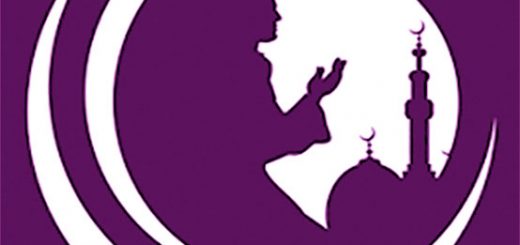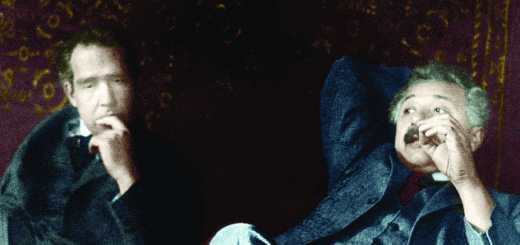The Islands with Unique English
It was approaching midday and beads of sweat formed on my back as I followed the road along the east coast of Tanna, one of the 83 islands that makes up the South Pacific nation of Vanuatu. Every so often the roadside foliage thinned enough to reveal a glimpse of blue sea and wooden fishing boats resting on the beaches. Patchy grass grew only where the towering palm trees afforded sufficient light; elsewhere the ground was bare.
Men carrying machetes walked swiftly by, their grubby T-shirts indicating that they’d already done a morning’s work in the fields while I’d been sleeping. Women wearing Victorian-style dresses called ‘Mother Hubbards’ gathered their washing, glancing anxiously at the grey clouds converging on the horizon.
Upon reaching the market in the town of Lenakel, a group of Tannese greeted me with a smile and a barrage of questions in Bislama, a pidgin dialect spoken only in Vanuatu.
“Wanem nem blong yu?” they asked.
Blong meant belong. Confidently, I replied, “My name’s Julia.”
“You blong wea?”
“I come from England.”
The news that I was from England invariably prompted comments about Prince Philip, who’d visited Vanuatu in 1974 on the Royal Yacht Britannia. Chief Jack Naiva, a warrior who ruled one of Tanna’s remote villages, had declared Prince Philip was the descendant of a Tannese mountain spirit. Since then, believers expected him to return one day, bringing abundant harvests and wealth to the island.
As the conversation grew more complex, I found myself struggling to keep up.
“Mi no save – I don’t understand,” I muttered. And with that, my new acquaintances shrugged and carried on their way.
On the face of it, Bislama, which is based on phonetic English, seems like it should be easy to pick up. Keen to use the 40-minute flight from Vanuatu’s capital Port Vila to Tanna to learn a few words, I studied a tea towel on sale in Air Vanuatu’s in-flight magazine that bore the basics of Bislama, each phrase accompanied by a helpful graphic. Underneath ‘Basket blong titi’ was a picture of a bikini. ‘Leg blong dak dak’ had been written below a snorkelling fin, which puzzled me for a while until I made the connection with a duck’s webbed foot. ‘Wota’ was obvious, now that I was in the beach mindset.
The delightful language has its origins in Vanuatu’s pre-colonial past. The word ‘bislama’ derives from ‘beche-de-mer’, the ubiquitous sea slug found in Vanuatu’s waters. In the 18th Century, beche-de-mer were highly sought after by the Chinese, who considered them a culinary delicacy. Lured by the promise of money and adventure, the Ni-Vanuatu people were more than happy to join the crew on ships bound for China.
But given that communities across the different islands developed in isolation from one another, there were – and still are – more than 100 different languages spoken across Vanuatu’s islands. The Ni-Vanuatu could barely understand each other, let alone foreigners working alongside them. As a result, the sailors created what was known as South Seas Jargon, a pidgin language that everyone could pick up without too much trouble. With the sailors returning frequently to Vanuatu ports, it didn’t take long for South Seas Jargon to find its way ashore.
By the 1860s, Australia’s many sugar plantations were also looking for labour. In a practice known as blackbirding, Ni-Vanuatu were brought to Queensland to work – not all of them voluntarily. To relieve the resultant linguistic headache, Queensland Plantation Pidgin English (a language similar to South Seas Jargon) was adopted. As plantation agriculture spread to Vanuatu, the pidgin-speaking Ni-Vanuatu returned home to work, and Queensland Plantation Pidgin English melded with South Seas Jargon to form a new dialect. When Vanuatu became a joint British and French colony in 1906, Bislama was already widely spoken, though it did adopt some French influence during the 20th Century.
In the 1970s, Bislama became the language of Vanuatu’s fight for independence. By the time autonomy was achieved in 1980, Bislama’s status as the islands’ unifying language was assured. Though French and English are still considered official languages of Vanuatu, Bislama is the language of choice. It’s taught in schools across the islands, and it appears on the nation’s banknotes and coins. Radio Vanuatu broadcasts in Bislama, as does Television Blong Vanuatu (TBV), the nation’s public television network.
Today, Bislama is an integral part of Vanuatu’s identity ? a way of binding the islands together.
After the failure that was my roadside conversation, I resolved to give Bislama another go. At my hotel, I found a Peace Corps Bislama Handbook that someone had left behind. I’d arranged a tour to Mount Yasur, an active volcano located on Tanna’s eastern side, so I flipped to the geology chapter and began to study. Volkeno was volcano, faerap (fire up) meant erupt, and, confusingly, lava, like water, was wota (though presumably hot water).
Though I knew the words, I still had no idea how to make a sentence. Would it be ‘Wota blong volkeno faerap’? I figured it couldn’t hurt to try.
The following day, I stood on the rim of Mount Yasur watching gloopy lava shoot several metres into the air right in front of me. From this lofty vantage point, rippled ash covered the ground, spewed from the volcano during previous eruptions and then sculpted by wind and rainstorms. Periodically, the rumbling sound of an explosion deep inside the belly of the volcano made my heart race.
Finally, I decided to attempt my new phrase. “Wota blong volkeno faerap,” I said, trying to exude confidence. The guide, barefoot and clad in dusty red cargo shorts, smiled as if indulging a small child.
“Yes, that’s what you call an eruption,” he answered, in English.
I had no words to continue the conversation and once again felt deflated at my inability to master the language – but at least he’d understood me. I decided I’d stick to English from then on. Bislama was harder than it looked.
Based on a story by
Julia Hammond















Recent Comments